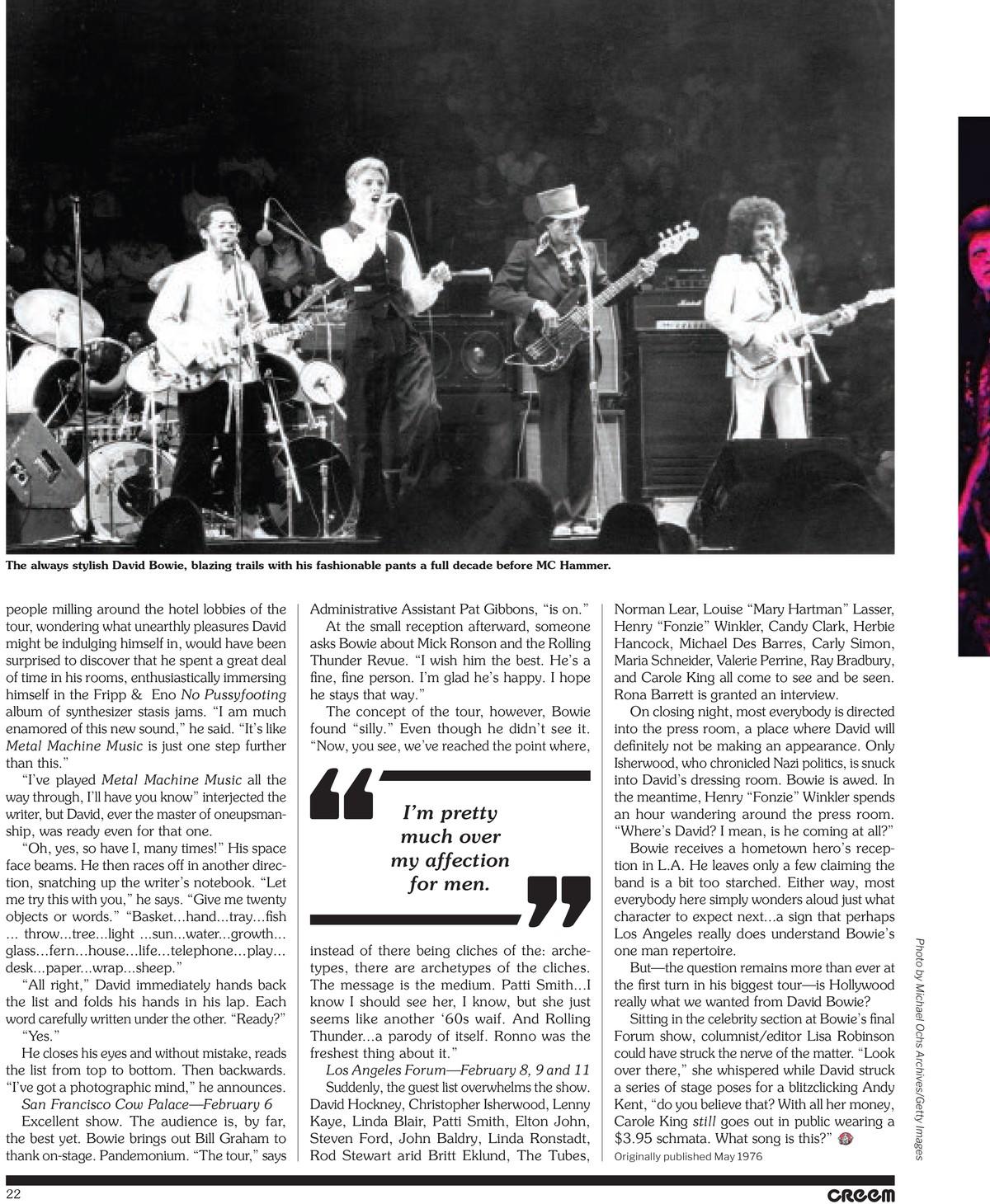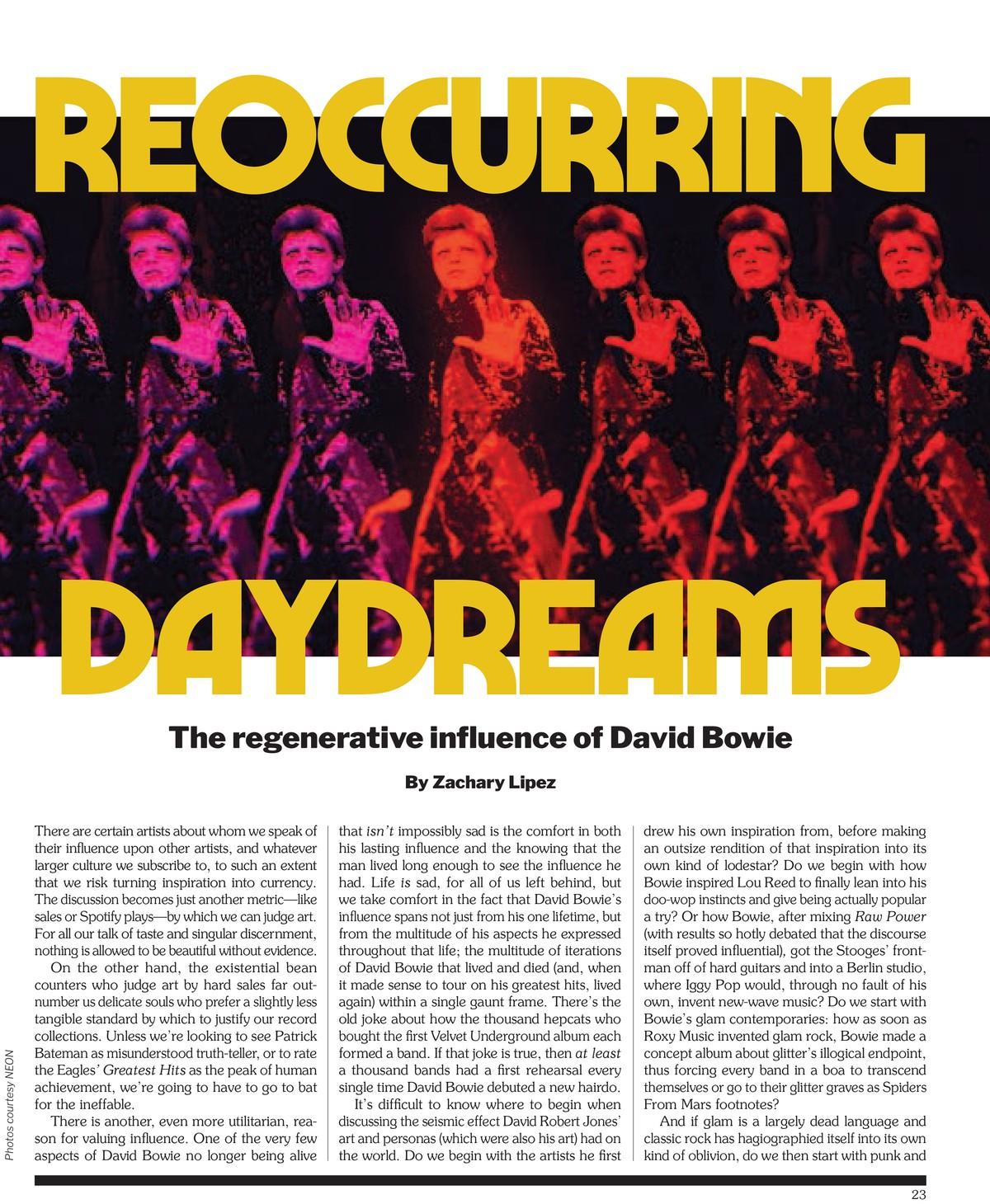REOCCURRING DAYDREAMS
The regenerative influence of David Bowie.


There are certain artists about whom we speak of their influence upon other artists, and whatever larger culture we subscribe to, to such an extent that we risk turning inspiration into currency. The discussion becomes just another metric—like sales or Spotify plays—by which we can judge art. For all our talk of taste and singular discernment, nothing is allowed to be beautiful without evidence.
On the other hand, the existential bean counters who judge art by hard sales far outnumber us delicate souls who prefer a slightly less tangible standard by which to justify our record collections. Unless we’re looking to see Patrick Bateman as misunderstood truth-teller, or to rate the Eagles’ Greatest Hits as the peak of human achievement, we’re going to have to go to bat for the ineffable.

